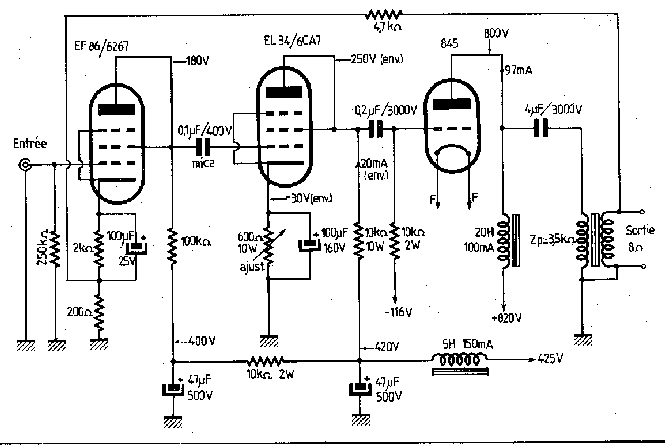

![]()
Pure A class is the most simple topology for designing an amplifier! The tube or the power transistor is loaded directly by the speaker (often thru a transformer, fro impedance matching!), and is biaised at the current necessary for full modulation (that means a maximum power dissipation for no input signal). The consumed to output power ratio is very low: 12.5% for a current source load (see PASS amplifiers), 25% for a transformer loaded triode with no grid current, 50% for the same triode in class A2 (with grid current) and 50% for a pentode (or tetrode). Under the most favourable conditions, a pure class A amplifier will dissipate the same power than it sends to the speaker. In a push-pull configuration, power yielding increase greatly, and even-order distorsion is nearly cancelled. In a tube amplifier, with an output transformer, push-pull topology draws an equal current in both half-primaries, resulting in a near zero magnetic flux at zero signal: this helps greatly in designing the transformer (altough leakage inductance between half-primaries can be a major drawback of that topology).
However, from a subjective (listening) point of view, single-ended A class is still a way ahead from any others topologies! In spite of a poor yielding and a low output power, if you want nothing but the very best in music reproduction, single-ended amplifiers are for you! Here is an example of a single-ended triode amplifier, giving about 15W of output power:
